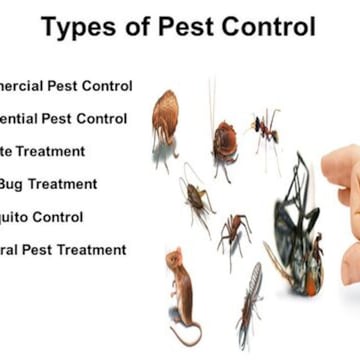Pest Control Fundamentals Explained
Pest Control - An Overview
Table of ContentsPest Control Fundamentals Explained3 Easy Facts About Pest Control ExplainedNot known Details About Pest Control Some Of Pest ControlTop Guidelines Of Pest Control
Limitations of Chemical Management Be able to analyze bug issues, identify if administration is essential, and make appropriate recommendations utilizing IPM strategies. Recognize with various techniques of parasite management - their benefits and limitations. Recognize the worth of useful insects. It is not possibleor even desirableto rid yards of all pests.This phase reviews (IPM), an approach that makes use of expertise about pests and their, practices, nonchemical techniques, and pesticides to manage bug problems. Extra info about IPM for certain plants is included in phases that concentrate on those plants. Bugs in a garden or landscape might include insects and termites, weeds,, mammals, and birds.
Many individuals rush to draw, hoe, or spray every weed they see. Insects and weeds, nonetheless, play a function in the. After planting a yard or developing a grass, the all-natural process of plant succession starts to restore and nonnative plants. A weed growing in a lawn stands for the initial stage in a series of occasions that, if permitted to continue, might eventually lead to a forest.
What we call "insects" belong to a natural system at the office. An environment has no pests. Only people think about particular species parasites when they occur where they are not wanted. We will certainly be extra effective in taking care of undesirable types when we realize that these organisms comply with predictable patterns that we can make use of to our benefit.
A Biased View of Pest Control
Parasites susceptible to a pesticide were rapidly killed, leaving immune ones to breed and multiply. It became clear that pesticides alone would not resolve all bug troubles.
An IPM strategy enables some level of pests in the setting. Insects are a lot less likely to survive a program that uses several techniques of decreasing their populations. Integrated insect management was first recommended by entomologists since bugs were the very first group of pests to prove hard to take care of with chemicals alone.
parasite and host accurately. and take into consideration financial or aesthetic injury. A limit is the point at which action need to be taken. a therapy technique making use of mechanical, cultural, organic, or chemical controls, or a mix of these methods. success of treatments. IPM has actually prolonged beyond bugs to administration of all pest populations: weeds, condition organisms, and animals.
Some Known Details About Pest Control
Administration rather than removal of pests is the objective. An IPM strategy begins with a cautious evaluation of each bug infestation.
Clover growing in a lawn may be deemed an unwanted weed, yet as a vegetable it is manufacturing nitrogen for the soil and the blossoms are offering nectar to honey and various other. Tolerance for some weeds may be component of an IPM plan. may be consuming the leaves of a plant, yet when they are identified as the larvae of Eastern tiger swallowtail butterflies, their damage might be endured so we can enjoy the beautiful butterfly.

The second most important device in insect monitoring is early intervention. Being present and watchful in the garden guarantees very early detection. Responding to issues rapidly, before they have visit our website time to increase, needs a less significant intervention. The third essential tool is recordkeeping; tracking what takes place in the garden makes it possible for a gardener to recognize patterns and make educated choices.
7 Simple Techniques For Pest Control
Several safe, sensible, nonchemical methods of plant security and bug management might decrease or eliminate the requirement to spray. Other techniques are most useful when used with chemicals. To apply administration techniques correctly and to lessen losses, garden enthusiasts ought to recognize the types of parasites that assault plants and comprehend pest biology.

Carrying out a dirt test and applying only the advised quantity my website of plant food and lime optimizes the advantage to the plant while decreasing problems associated to extreme use of plant food - Pest Control. Covering the dirt with numerous inches of mulch shields the plant in numerous ways: minimizing soil water loss to evaporation, lessening weed competition, providing nutrients, and creating an appropriate environment for earthworms and microbes that keep the dirt loose for roots and damage down organic product to release nutrients
If mulch touches the trunk, it can produce a method for voles, microorganisms, and fungis to assault the plant. Do not utilize manure or compost that has not completely decomposed as a top clothing because it can motivate undesirable bugs. Study suggests that tilling the dirt is harmful to soil framework.
Getting My Pest Control To Work
If tilling is regarded essential, consider doing it in the autumn when the life process of many pests brings them near the surface area. At the surface area, parasites become exposed to the weather in addition to birds and various other natural adversaries. Autumn tilling can likewise damage pests in crop deposits. Usage healthsome and insect-free qualified seeds and plants if readily available.